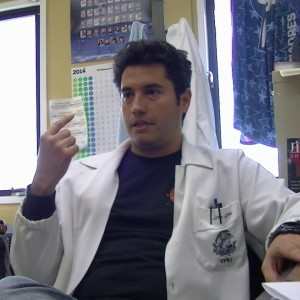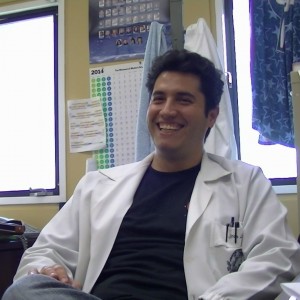NASA エイムズ研究所イヴァン・パウリーノ-リマ先生へのインタビュー後篇です(前篇)。後篇では今後の研究やモチベーションについてお伺いしました。
※点線がついている単語にカーソルを当てると簡単な日本語訳が見られます
― What do you expect for the future of metabolomics for your study?
We hope to detect anything that can play a role in radiation resistance and then depending on what we find we can explore it and develop research in the applied sector and couple with the pharmaceutical industry and the food industry and so on.
― So we can detect many organics but to understand the mechanism of production, need to couple metabolomics with other analysis like transcriptomics?
 Metabolome analysis can tell us what different organics are present in the early and later growth phases in my isolates but in order to know what genetic mechanism is involved we need to be able to compare with whole genome sequence and transcriptomics.
Metabolome analysis can tell us what different organics are present in the early and later growth phases in my isolates but in order to know what genetic mechanism is involved we need to be able to compare with whole genome sequence and transcriptomics.
If we combine these we will be able to understand whole pathways and figure out why and how these components are being produced.
― What are the next steps of your research?
I just submitted a proposal for JGI to take samples from uranium mining sites. These environments are naturally enriched in radiation, the levels of radiation at the site is actually very low but when you think about micrometer distances the dose is much higher than you would see by just sampling the environment. On a smaller scale, this dose can represent a selective pressure for radiation resistance organisms.
The technique I’m going to use is called single cell genomics. You can do genomics from single cells without needing to culture them. We will be looking at ground water samples from radioactive geological deposits in uranium mines in Colorado and then irradiate the samples at the Lawrence Livermore National Laboratory and then bring the samples to JGI for live/dead assay and pick live ones for single cell genomics.
― What is your motivation for doing research?
 I think the biggest motivation is that I am curious about everything and passionate about biology and astrobiology. I want to understand the limits of life on earth and to provide guidelines for our search of life elsewhere. If we understand the extreme limits of life on earth we can look for other life in the solar system based on these guidelines.
I think the biggest motivation is that I am curious about everything and passionate about biology and astrobiology. I want to understand the limits of life on earth and to provide guidelines for our search of life elsewhere. If we understand the extreme limits of life on earth we can look for other life in the solar system based on these guidelines.
I can give an example, temperature, the more we study extreme environments with regard to temperature, the more we find life thriving in places that we thought was too warm or too cold. We can think of the same thing for other parameters like salinity or radiation. The more we study extremophiles the more they expand the possibilities of finding life elsewhere.
― I don’t think there are any studies done on metabolome of extremophiles.
Yeah many extremophiles are very difficult to cultivate. They are difficult, but not impossible, so many microbiologists are working to make media that vary in temperature and salinity and pH that can be used to cultivate.
― I want to know where your curiosity came from?
Before middle school I was not a very good student. When I got to middle school and started studying genetics I was fascinated. I was not good at calculus, but with genetics I discovered that I could do genetics calculations so I started to love math when it was applied to genetics. I got passionate about genetics and I think that’s why I chose genetics over physics or astronomy, because I love astronomy as well.
Genetics was the reason why I chose biology and the more I studied living things, evolution, genetics, and microbiology the more I enjoyed it and that’s how I keep myself curious.
 ―You are also very passionate about soccer as well!
―You are also very passionate about soccer as well!
I was better at soccer as a teenager so maybe that’s why I was bad at school!
― Thank you.
(2014年12月 インタビュー:藤島皓介・写真:井元淳)
インタビュイープロフィール
Ivan Gláucio PAULINO-LIMA (イヴァン・パウリーノ-リマ)
2005 State University of Londrina Genetics and Molecular Biology , MSc
2010 Federal University of Rio de Janeiro Biophysics, PhD
2011 Professor of Biochemistry at State University of Londrina
2011~ NASA Postdoctoral Program
